The Evangelion and Japanese Swords Exhibition from the perspective of a Spanish manga lover
David Jiménez Román, Co-founder of Ramen Para Dos
The Japan Foundation held the Evangelion and Japanese Swords Exhibition in Paris from April through June, 2014 after the exhibition enjoyed a great popularity in Japan, and also organized the event in Madrid in commemoration of the 400th anniversary of Japan-Spain exchanges from July 5 through September 28, 2014. In this exhibition where master craftsmen across Japan challenged the world of Evangelion: New Theatrical Edition, a popular animated film series, the swords and other sharp-edged weapons replicated with traditional skills such as the Lance of Longinus, Bizen Osafune and Magoroku Sword which are important items of the story as well as 20 Japanese swords and other items created by craftsmen who got inspirations from Evangelion and its characters were mainly shown together with 5 famous and traditional Japanese swords, accessories, the real-sized sculpture of Eva 01 and character image panels. What impressions did the exhibition give the participants in Paris and Madrid? In this article, Mr. David Jiménez Román in Spain talks about the exhibition. He has been attracted to Japanese manga and anime since his childhood, contributed articles to various manga and video game-related magazines and websites, and founded Ramen Para Dos (Ramen for two), a blog to introduce Japanese culture focusing on manga and anime.
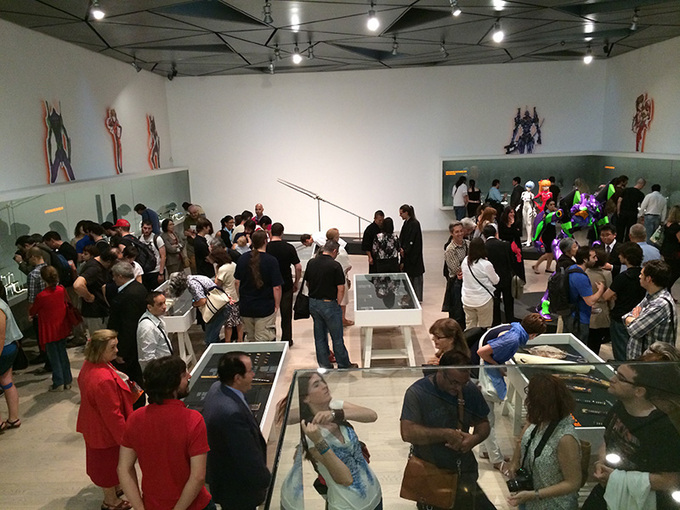
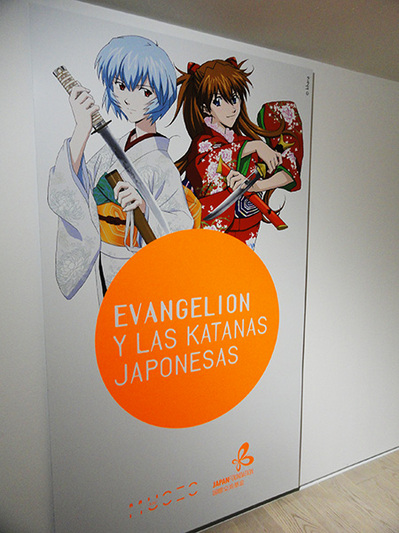
The Fusion of Tradition and Innovation
From July 5 until September 28, in the Museo ABC in Madrid (Calle de Amaniel, no. 29), you can enjoy the Evangelion and Japanese Swords Exhibition, an unusual and interesting fusion of the latest anime with the art of the traditional Japanese sword. This exhibition can be enjoyed in Madrid, after a stop in Paris before returning to Japan. It is a great opportunity to enjoy two elements that are deeply rooted in Japanese culture: innovation and tradition.
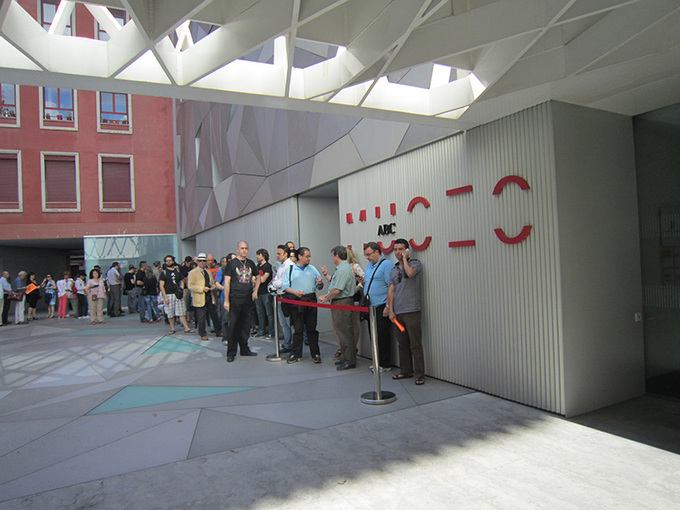
At first, the mixture of anime and traditional culture can be a bit strange for any lover of Japanese animation, but there are several things in common between the two elements. Many of the characters in manga and Japanese anime represent traditional ideals of Samurai, such as honor or sacrifice, ideals that are reflected in parallel in the swords that they carry, even if it is a story in a futuristic and technological style like Evangelion, where mechas or robots sometimes make use of swords and other sharp-edged weapons in their fighting.
Manga and anime's constant references to the spirit of Samurai were rewarded when master craftsmen of the Bizen Osafune Japanese Sword Museum asked permission from the Evangelion animation team to build a replica in forged metal of the popular weapon in the animation series: the Lance of Longinus. This lance appears in the series referring to the mythical Roman soldier's weapon that pierced the side of Jesus, according to the Bible. The weapon has a crucial importance in the story, and is one of the most characteristic elements of the animated series created by Gainax and Hideaki Anno.
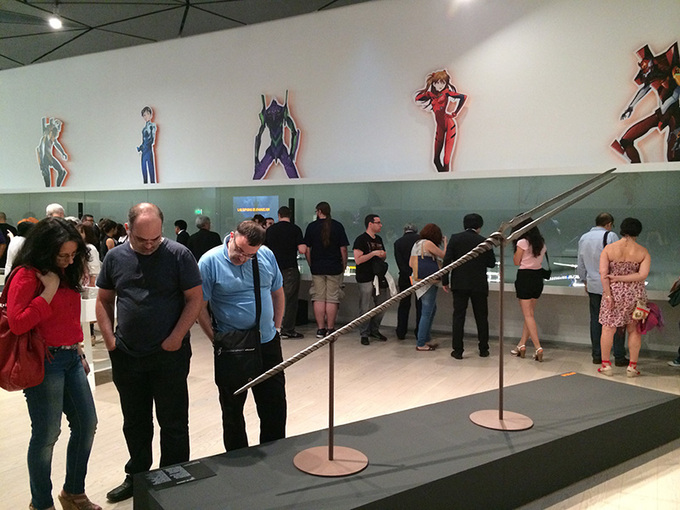
This lance is the jewel of the exhibition. A work of art more than three meters in length, forged from metal weighing as heavy as 22 kilograms, this lance illustrates the art of master craftsmen of the Japanese museum. The lance has a spectacular finish and details, in both its edge and on the long handle. It is worthy of slow and careful study.
Because of this spectacular work, the relationship between artisans and the animators intensified, and resulted in the development of many other edged weapons related to and inspired by Evangelion, such as Bizen Osafune and Magoroku Sword. These weapons appear in the novel Shin Seiki Evangelion ANIMA, which tells a different story than that of the original series.
All these swords were exhibited in Japan in 2012, at the Bizen Osafune Japanese Sword Museum in Okayama Prefecture, for the premiere of Evangelion 3.0 You Can (not) Redo. After being visited by as many as 360,000 fans in Japan, the exhibition will visit only two places in the West - Paris and Madrid - before returning to its home country.
Space for the Mixture of Arts and Entertainment
The exhibition can be visited at the Museo ABC in Madrid. It has two main areas that are very well-defined. On one side is the exhibition of traditional Japanese swords, where you can see true works of art, some over 800 years old. It has all kinds of edged weapons, from long swords to various short swords, with descriptive texts on their creation, materials used, and details that make them unique such as engraving or embossing. All the weapons are shown with their handles (tsuka), guards (tsuba) and sheaths (saya), showing different styles and techniques of various schools of craftsmen throughout history. One of a kind Tsuba and habaki (a piece of metal encircling the base of the blade of a Japanese sword) are also shown.
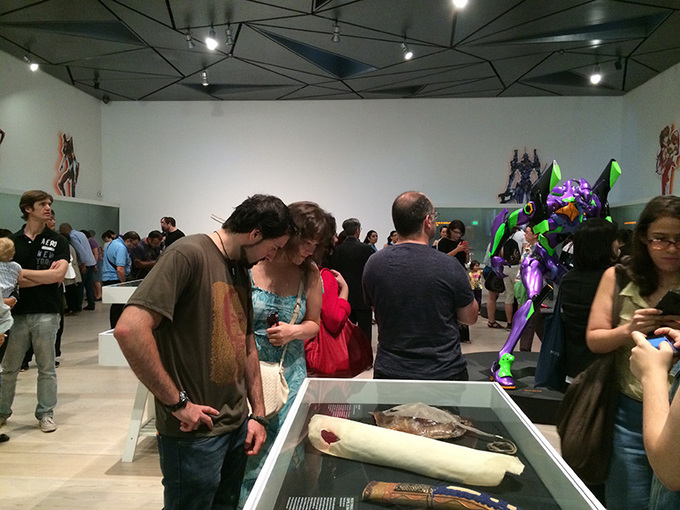
The other main area of the exhibition features collaboration between the master craftsmen and the animation team of Evangelion, with about 20 weapons that were produced by over 50 craftsmen in Japan. In this area, we can see weapons inspired by both the animated series, and by manga or novels based on the series.
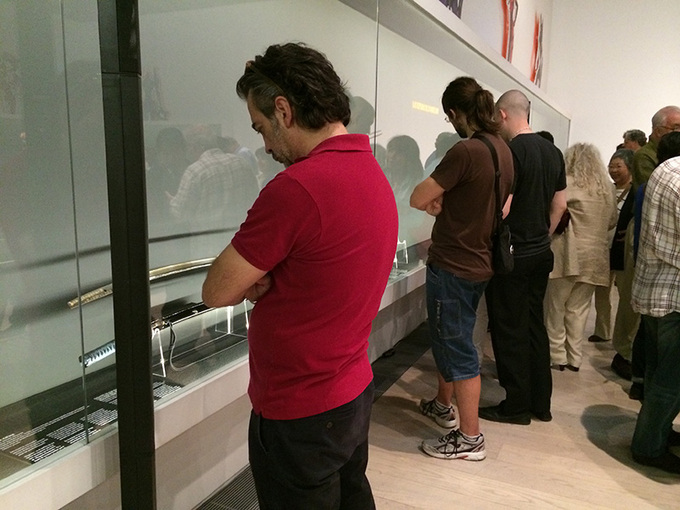
Some reflect the spirit and design of each of the main characters, following their characteristic colors and function in the series. For example, there is a spectacular sword with a purplish tone sheath based on EVA 01, one of the main characters, and also curiosities like a short sword dedicated to the Asuka character, with her figure etched on the blade, a unique object, since it is unusual for artisans to engrave the figure of a woman on the blade of a weapon.
We can also find replicas of weapons that appear in the series, such as the progressive knife of the EVA or the Bizen Osafune and Magoroku Sword mentioned above, truly spectacular and unique works that appear in the Evangelion, inspired by classical Japanese weapons and which have been created following the illustrations that accompany the story.
This area also has combat masks, showing the relationship between Samurai armor and the humanized aspect of Evangelion robots, especially that of EVA 01 and his berserk mode, which is reminiscent of a traditional Japanese demon, or oni.
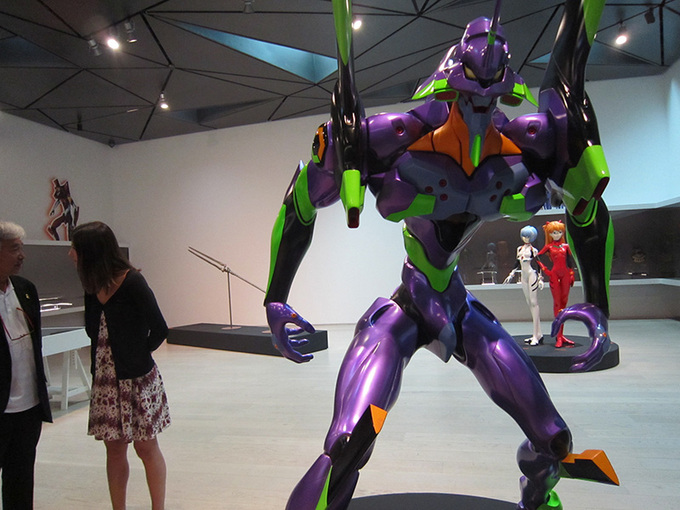
Apart from these two main areas, the exhibition also tries to show in a very educational way the various aspects of a Japanese sword, from its creation, to the maintenance needed for a weapon of such special characteristics. In this way, we can see the stages passed through for sharpening the blade of a Japanese sword, the utensils and materials used during the process, and how the handles are made - traditionally of wood covered with shark skin with different twisted cotton, silk or leather for better grip.
The exhibition also has several sculptures of Evangelion characters, such as EVA 01, Asuka and Rei Ayanami, as well as traditional Japanese Samurai armor. To complete the experience and satisfy the curiosity of visitors, they can see various graphs and infographics about the history of a Japanese sword and its creation, as well as videos about the exhibition and the creation of the Lance of Longinus, where they can see scenes of it being forged.
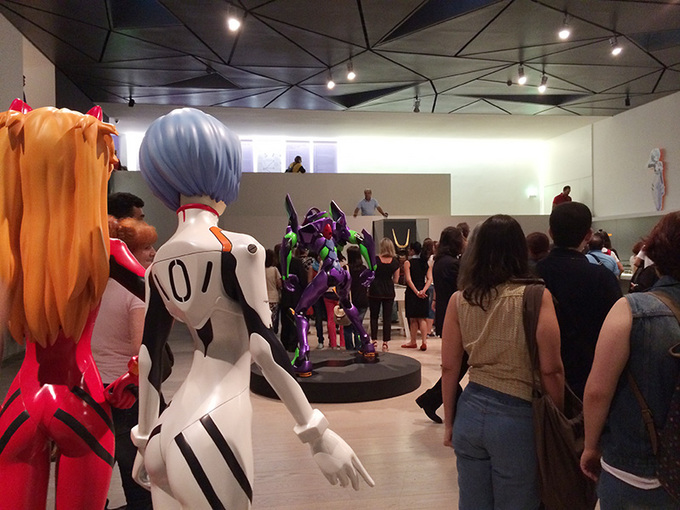
The exhibition as a whole is a wonderful opportunity to unite two very important elements of Japanese culture, elements which are seemingly very different from each other in nature, but that have continued to inspire each other. Thus arts and entertainment are intertwined in a way that nobody could have imagined, attracting a very diverse public to this exhibition, and demonstrating how Japanese culture contains elements of both innovation and tradition.
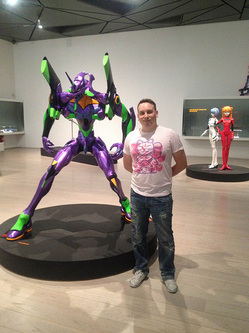 David Jiménez Román
David Jiménez Román
David Jiménez Román, co-founder of Ramen Para Dos, was born in Barcelona in 1978, has always been in love with the world of comics and animation. In the '80s, he began to read the Transformers comics, until the Dragon Ball boom in '92, when he became interested in manga and anime. For years, he has worked on various magazines and websites of the comic book industry and video games, until in 2007 he founded Ramen Para Dos with Diana Calleja, a blog devoted to otaku culture in general, currently the most widely read web publication of this type in Spain.
Back Issues
- 2022.11. 1 Inner Diversity<3> <…
- 2022.9. 5 Report on the India-…
- 2022.6.24 The 48th Japan Found…
- 2022.6. 7 Beyond Disasters - …
- 2021.3.10 Crossing Borders, En…
- 2020.7.17 A Millennium of Japa…
- 2020.3.23 A Historian Interpre…
- 2019.11.19 Dialogue Driven by S…
- 2019.10. 2 The mediators who bu…
- 2019.6.28 A Look Back at J…

